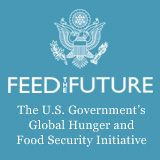Publication
The Role of Insecticides in Reductions of Thrips Injury and Tomato Spotted Wilt Virus in Virginia/North Carolina Peanu
Details
Author(s):
D.A. Herbert Jr.; S. Malone; R. L. Brandenburg; B. M. Royals
Type of Document:
Conference Proceeding or Document
Publisher/Journal:
Not Available
Date of Publication:
2007
Place of Publication:
Not Available
Links
Description
Abstract: A field experiment was conducted in 2003, 2004 and 2005 at the Virginia Tech Tidewater Agricultural Research and Extension Center, Suffolk, Virginia to evaluate the role of insecticides in reducing seedling injury caused by tobacco thrips (Franliniella fusca) feeding and incidence of tomato spotted wilt virus (TSWV). Either aldicarb or phorate, each at 1.0 lb ai/acre, was applied into the seed furrow at planting. Each was followed by foliar broadcast applications of acephate at 0.36 lb ai/acre. Broadcast treatments were applied either zero times, one time at late-ground cracking stage (LGC) when seedlings were ca. 6 inches in diameter, 2 times (at LGC and again in 2 wks), 3 times (at LGC, and again at 2 wks and 4 wks), or 4 times (at LGC and again at 2 wks, 4 wks, and 6 wks). Plots were 40 ft long and 4 rows wide, replicated 4 times in a randomized complete block design. Only the center 2 rows of each plot were treated with insecticides. Three or 4 visual thrips plant injury ratings were taken at 2-wk intervals beginning at LGC. Injury was rated based on a 0-10 scale where 0=no injury and 10=dead plants. TSWV incidence was estimated 3 times at about 3-wk intervals beginning when the first symptoms appeared by counting the number of plants exhibiting disease symptoms in the treated rows of each plot. Pod yields were determined based on digging and harvesting the treated rows of each plot. To satisfy assumptions for ANOVA, thrips plant injury ratings were log transformed and TSWV ratings were squareroot transformed. SAS proc mixed was used to analyze thrips plant injury, TSWV incidence and yield data. Year and replication were random effects in all models. The models for thrips plant injury ratings and TSWV ratings had the repeated assessments modeled using an autoregressive covariance structure. Results showed that for the thrips plant injury rating there was a significant difference between the in-furrow treatments (P=0.0016) with aldicarb resulting in the least injury, 5.4% less than phorate. There was a significant difference between numbers of broadcast acephate applications (P=0.0007). Tukey adjusted pairwise comparisons showed that there was a significant difference between zero broadcast applications and one application (P=0.0003). However, there were no significant differences between one and 2 applications (P=0.5873), one and 3 applications (P=0.9669), one and 4 applications (P=0.9230), 2 and 3 applications (P=0.9243), 2 and 4 applications (P=0.9677), or 3 and 4 applications (P=0.9998). With TSWV incidence rating, there was a significant difference between in-furrow treatments (P=0.0001) with phorate resulting in fewer symptomatic plants than aldicarb. There was a significant difference between numbers of broadcast acephate applications (P=0.0222). However, Tukey adjusted pairwise comparisons showed that the response was weak and only 4 applications resulted in significantly fewer symptomatic plants compared to zero applications (P=0.0342). With pod yield, there was no significant difference between in-furrow treatments (P=0.0854). However, there was a significant difference between number of broadcast acephate applications (P=0.0001). Pairwise comparisons showed that there was a significant difference between zero broadcast applications and one application (P=0.0058), zero and 2 applications (P=0.0045), zero and 3 applications (P=0.0003), and zero and 4 applications (P=0.0001). However, there were no significant differences between one application and any of the multiple applications.
